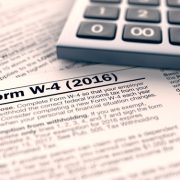Do You Have Enough Emergency Savings?
A December 2015 survey by a consumer financial services company showed that 36% of the people who participated said they dealt with their most recent unexpected expense by using savings. Would you be part of that group? Here are tips for starting your “rainy day” fund.
Define how much emergency savings is enough. A good starting point is to plan for your emergency fund to cover three to six months of expenses. Another good starting point: Ask yourself how much you’ll need to cover minimum monthly expenses without resorting to credit cards or lines of credit. Your assessment of an adequate balance will vary based on your financial situation, including the vulnerability of your income. For example, a one-earner household is more vulnerable than a two-earner household when it comes to paychecks, so the one-earner family generally will need to set aside more for emergencies.
Track how much you already have set aside. Include all sources in your accounting. For instance, some companies provide payment for accrued vacation and/or sick leave to laid-off employees. If your company provides this benefit and you maintain significant balances, you may not need as much in an emergency fund to help you weather an unexpected layoff.
Decide whether to pay off bills first. Putting excess cash toward high interest credit card balances might make more sense than funding a savings account that earns a much lower rate of interest.
Keep your funds liquid. Emergency money should be easy to get at. You don’t want to have to sell investments at a potential loss or pay withdrawal penalties in order to cover an unexpected hit to your finances. Look into savings or money market accounts as places to accumulate cash.


